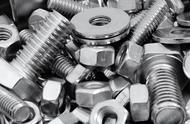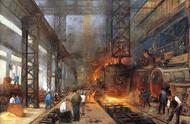The Industrial Revolution, the period in which agrarian and handicraft economies shifted rapidly to industrial and machine-manufacturing-dominated ones, began in the United Kingdom in the 18th century and later spread throughout many other parts of the world. This economic transformation changed not only how work was done and goods were produced, but it also altered how people related both to one another and to the planet at large. This wholesale change in societal organization continues today, and it has produced several effects that have rippled throughout Earth’s political, ecological, and cultural spheres. The following list describes some of the great benefits as well as some of the significant shortcomings associated with the Industrial Revolution.
工业革命是指农业和手工业经济向工业和机器制造业为主的经济快速转变的时期,始于 18 世纪的英国,后来蔓延到世界许多其他地区。这种经济转型不仅改变了工作方式和商品生产方式,而且改变了人们相互之间以及与整个地球的关系。这种社会组织的整体变化一直持续到今天,并产生了一些影响,波及到地球的政治、生态和文化领域。以下清单描述了与工业革命相关的一些巨大好处以及一些重大缺点。

- Factories and the machines that they housed began to produce items faster and cheaper than could be made by hand. As the supply of various items rose, their cost to the consumer declined (see supply and demand). Shoes, clothing, household goods, tools, and other items that enhance people’s quality of life became more common and less expensive. Foreign markets also were created for these goods, and the balance of trade shifted in favor of the producer—which brought increased wealth to the companies that produced these goods and added tax revenue to government coffers. However, it also contributed to the wealth inequality between goods-producing and goods-consuming countries.
- 工厂及其容纳的机器开始比手工生产更快、更便宜地生产物品。随着各种物品供应的增加,消费者的成本下降(见供求关系)。鞋子、服装、家居用品、工具和其他提高人们生活质量的物品变得更加普遍和便宜。这些商品也为外国市场创造了市场,贸易平衡向生产者倾斜,这给生产这些商品的公司带来了更多的财富,并为政府的金库增加了税收收入。然而,这也导致了商品生产国和商品消费国之间的财富不平等。
- The rapid production of hand tools and other useful items led to the development of new types of tools and vehicles to carry goods and people from one place to another. The growth of road and rail transportation and the invention of the telegraph (and its associated infrastructure of telegraph—and later telephone and fiber optic—lines) meant that word of advances in manufacturing, agricultural harvesting, energy production, and medical techniques could be communicated between interested parties quickly. Labor-saving machines such as the spinning jenny (a multiple-spindle machine for spinning wool or cotton) and other inventions, especially those driven by electricity (such as home appliances and refrigeration) and fossil fuels (such as automobiles and other fuel-powered vehicles), are also well-known products of the Industrial Revolution.
- 手工工具和其他有用物品的快速生产导致了新型工具和车辆的发展,以将货物和人员从一个地方运送到另一个地方。道路和铁路运输的发展以及电报的发明(以及与之相关的电报和后来的电话和光纤线路基础设施)意味着制造业、农业收获、能源生产和医疗技术的进步可以在相关方之间迅速传达。省力机器,如纺车(用于纺羊毛或棉花的多锭机器)和其他发明,特别是电力驱动的发明(如家用电器和制冷)和化石燃料驱动的发明(如汽车和其他燃料动力车辆),也是工业革命的知名产物。
- The Industrial Revolution was the engine behind various advances in medicine. Industrialization allowed medical instruments (such as scalpels, microscope lenses, test tubes, and other equipment) to be produced more quickly. Using machine manufacturing, refinements to these instruments could more efficiently roll out to the physicians that needed them. As communication between physicians in different areas improved, the details behind new cures and treatments for disease could be dispersed quickly, resulting in better care.
- 工业革命是医学各种进步的引擎。工业化使医疗器械(如手术刀、显微镜镜头、试管和其他设备)能够更快地生产。使用机器制造,这些仪器的改进可以更有效地推广到需要它们的医生。随着不同地区医生之间的沟通改善,疾病新疗法的细节可以迅速传播,从而改善护理。
- Mass production lowered the costs of much-needed tools, clothes, and other household items for the common (that is, nonaristocratic) people, which allowed them to save money for other things and build personal wealth. In addition, as new manufacturing machines were invented and new factories were built, new employment opportunities arose. No longer was the average person so closely tied to land-related concerns (such as being dependent upon the wages farm labor could provide or the plant and animal products farms could produce). Industrialization reduced the emphasis on landownership as the chief source of personal wealth. The rising demand for manufactured goods meant that average people could make their fortunes in cities as factory employees and as employees of businesses that supported the factories, which paid better wages than farm-related positions. Generally speaking, people could save some portion of their wages, and many had the opportunity to invest in profitable businesses, thereby growing their family “nest eggs.” The subsequent growth of the middle class in the United Kingdom and other industrializing societies meant that it was making inroads into the pool of economic power held by the aristocracy. Their greater buying power and importance in society led to changes in laws that were updated to better handle the demands of an industrialized society.
- 大规模生产降低了普通(即非贵族)民众所需的工具、衣服和其他家用物品的成本,这使他们能够为其他事情省钱并积累个人财富。此外,随着新的制造机器的发明和新工厂的建造,新的就业机会出现了。普通人不再与土地相关的问题(例如依赖农场劳动提供的工资或农场可以生产的动植物产品)密切相关。工业化降低了对土地所有权作为个人财富主要来源的重视。对制成品需求的不断增长意味着普通人可以在城市中作为工厂工人和支持工厂的企业的雇员发家致富,这些工作的工资比与农场相关的职位更高。一般来说,人们可以节省一部分工资,许多人有机会投资于有利可图的企业,从而增加他们的家庭“储蓄”。英国和其他工业化社会中产阶级的随后增长意味着它正在侵占贵族掌握的经济权力池。他们更大的购买力和在社会中的重要性导致法律发生变化,以更好地应对工业化社会的需求。
- As industrialization progressed, more and more rural folk flocked to the cities in search of better pay in the factories. To increase the factories’ overall efficiency and to take advantage of new opportunities in the market, factory workers were trained to perform specialized tasks. Factory owners divided their workers into different groups, each group focusing on a specific task. Some groups secured and transported to the factories raw materials (namely iron, coal, and steel) used in mass production of goods, while other groups operated different machines. Some groups of workers fixed machines when they broke down, while others were charged with making improvements to them and overall factory operation.
- 随着工业化的发展,越来越多的农村人涌向城市,在工厂里寻找更高的工资。为了提高工厂的整体效率并利用市场上的新机会,工厂工人接受了执行专门任务的培训。工厂所有者将他们的工人分成不同的小组,每个小组专注于一项特定的任务。一些小组确保并运送到工厂用于大规模生产商品的原材料(即铁、煤和钢),而其他小组则操作不同的机器。一些工人小组在机器发生故障时进行维修,而另一些则负责对机器和整个工厂运营进行改进。
- As the factories grew and workers became more specialized, additional teachers and trainers were needed to pass on specialized skills. In addition, the housing, transportation, and recreational needs of factory workers resulted in the rapid expansion of cities and towns. Governmental bureaucracies grew to support these, and new specialized departments were created to handle traffic, sanitation, taxation, and other services. Other businesses within the towns also became more specialized as more builders, physicians, lawyers, and other workers were added to handle the various needs of the new residents.
- 随着工厂的发展和工人变得更加专业化,需要额外的教师和培训师来传授专业技能。此外,工厂工人的住房、交通和娱乐需求导致城市和城镇迅速扩张。政府机构也随之发展壮大,以支持这些需求,并成立了新的专门部门来处理交通、卫生、税收和其他服务。随着更多的建筑商、医生、律师和其他工人加入以满足新居民的各种需求,城镇内的其他企业也变得更加专业化。
- The promise of better wages attracted migrants to cities and industrial towns that were ill-prepared to handle them. Although initial housing shortages in many areas eventually gave way to construction booms and the development of modern buildings, cramped shantytowns made up of shacks and other forms of poor-quality housing appeared first. Local sewerage and sanitation systems were overwhelmed by the sudden influx of people, and drinking water was often contaminated. People living in such close proximity, fatigued by poor working conditions, and drinking unsafe water presented ideal conditions for outbreaks of typhus, cholera, smallpox, tuberculosis, and other infectious diseases. The need to treat these and other diseases in urban areas spurred medical advances and the development of modern building codes, health laws, and urban planning in many industrialized cities.
- 更高工资的承诺吸引了移民到城市和工业城镇,但这些城镇还没有准备好应对他们。尽管许多地区最初的住房短缺最终让位于建筑热潮和现代建筑的发展,但最初出现的是由棚屋和其他形式的劣质住房组成的狭窄棚户区。当地的污水和卫生系统被突然涌入的人所淹没,饮用水经常受到污染。生活在如此接近的地方,工作条件恶劣,饮用水不安全,这些都为伤寒、霍乱、天花、结核病和其他传染病的爆发提供了理想的条件。在城市地区治疗这些和其他疾病的需要推动了许多工业化城市的医学进步和现代建筑规范、卫生法和城市规划的发展。
- With relatively few exceptions, the world’s modern environmental problems began or were greatly exacerbated by the Industrial Revolution. To fuel the factories and to sustain the output of each and every type of manufactured good, natural resources (water, trees, soil, rocks and minerals, wild and domesticated animals, etc.) were transformed, which reduced the planet’s stock of valuable natural capital. The global challenges of widespread water and air pollution, reductions in biodiversity, destruction of wildlife habitat, and even global warming can be traced back to this moment in human history. The more countries industrialize in pursuit of their own wealth, the greater this ecological transformation becomes. For example, atmospheric carbon dioxide, a primary driver of global warming, existed in concentrations of 275 to 290 parts per million by volume (ppmv) before 1750 and increased to more than 400 ppmv by 2017. In addition, human beings use more than 40% of Earth’s land-based net primary production, a measure of the rate at which plants convert solar energy into food and growth. As the world’s human population continues to grow and more and more people strive for the material benefits promised by the Industrial Revolution, more and more of Earth’s resources are appropriated for human use, leaving a dwindling stock for the plants and animals upon whose ecosystem services (clean air, clean water, etc.) the biosphere depends.
- 除了少数例外,世界上的现代环境问题始于或因工业革命而大大恶化。为了给工厂提供燃料并维持每种制造商品的产出,自然资源(水、树木、土壤、岩石和矿物、野生和驯养动物等)被转化,这减少了地球上宝贵的自然资本存量。广泛的水和空气污染、生物多样性减少、野生动物栖息地破坏,甚至全球变暖等全球性挑战都可以追溯到人类历史上的这一时刻。越多的国家追求工业化以追求自己的财富,这种生态转变就越大。例如,大气中二氧化碳是导致全球变暖的主要驱动力,在 1750 年之前,其浓度为每百万体积 275 至 290 个单位(ppmv),到 2017 年已增至超过 400 ppmv。此外,人类使用超过 40%的地球陆地净初级生产力,这是衡量植物将太阳能转化为食物和生长速度的指标。随着世界人口的持续增长,越来越多的人追求工业革命带来的物质利益,越来越多的地球资源被用于人类使用,为植物和动物留下的资源越来越少,而生态系统服务(清洁空气、清洁水等)依赖于生物圈。
- When factories sprung up in the cities and industrial towns, their owners prized production and profit over all else. Worker safety and wages were less important. Factory workers earned greater wages compared with agricultural workers, but this often came at the expense of time and less than ideal working conditions. Factory workers often labored 14–16 hours per day six days per week. Men’s meager wages were often more than twice those of women. The wages earned by children who worked to supplement family income were even lower. The various machines in the factory were often dirty, expelling smoke and soot, and unsafe, both of which contributed to accidents that resulted in worker injuries and deaths. The rise of labor unions, however, which began as a reaction to child labor, made factory work less grueling and less dangerous. During the first half of the 20th century, child labor was sharply curtailed, the workday was reduced substantially, and government safety standards were rolled out to protect the workers’ health and well-being.
- 当工厂在城市和工业城镇涌现时,他们的所有者将生产和利润置于首位。工人的安全和工资则不那么重要。与农业工人相比,工厂工人的工资更高,但这往往是以时间和不理想的工作条件为代价的。工厂工人经常每天工作 14-16 小时,每周工作六天。男性的微薄工资通常是女性的两倍多。为了补充家庭收入而工作的儿童的工资甚至更低。工厂中的各种机器通常很脏,排放着烟雾和烟灰,而且不安全,这两者都导致了导致工人受伤和死亡的事故。然而,劳工工会的兴起,最初是对童工的反应,使工厂工作变得不那么艰苦和危险。在 20 世纪上半叶,童工急剧减少,工作日大幅减少,政府制定了安全标准来保护工人的健康和福祉。
- As more cheap labor-saving devices become available, people performed less strenuous physical activity. While grueling farm-related labor was made far easier, and in many cases far safer, by replacing animal power and human power with tractors and other specialized vehicles to till the soil and plant and harvest crops, other vehicles, such as trains and automobiles, effectively reduced the amount of healthy exercise people partook in each day. Also, many professions that required large amounts of physical exertion outdoors were replaced by indoor office work, which is often sedentary. Such sedentary behaviors also occur away from work, as television programs and other forms of passive entertainment came to dominate leisure time. Added to this is the fact that many people eat food that has been processed with salt and sugar to help with its preservation, lower its cooking time, and increase its sweetness. Together, these lifestyle trends have led to increases in lifestyle-related diseases associated with obesity, such as heart disease, diabetes, and certain forms of cancer.
- 随着越来越多的廉价省力设备的出现,人们进行的体力活动越来越少。虽然用拖拉机和其他专用车辆代替畜力和人力来耕种土壤、种植和收获作物,使与农场相关的艰苦劳动变得更加容易,而且在许多情况下更加安全,但其他车辆,如火车和汽车,有效地减少了人们每天参加的健康锻炼量。此外,许多需要大量户外体力劳动的职业被室内办公室工作所取代,而室内办公室工作往往是久坐的。这种久坐行为也发生在工作之外,因为电视节目和其他形式的被动娱乐开始主导休闲时间。此外,许多人食用经过盐和糖加工的食物,以帮助保存、减少烹饪时间并增加其甜味。这些生活方式趋势共同导致与肥胖相关的生活方式相关疾病的增加,例如心脏病、糖尿病和某些形式的癌症。
引自:Rafferty, John P.. "The Rise of the Machines: Pros and Cons of the Industrial Revolution". Encyclopedia Britannica, 30 Sep. 2017, https://www.britannica.com/story/the-rise-of-the-machines-pros-and-cons-of-the-industrial-revolution. Accessed 6 March 2024.
,











